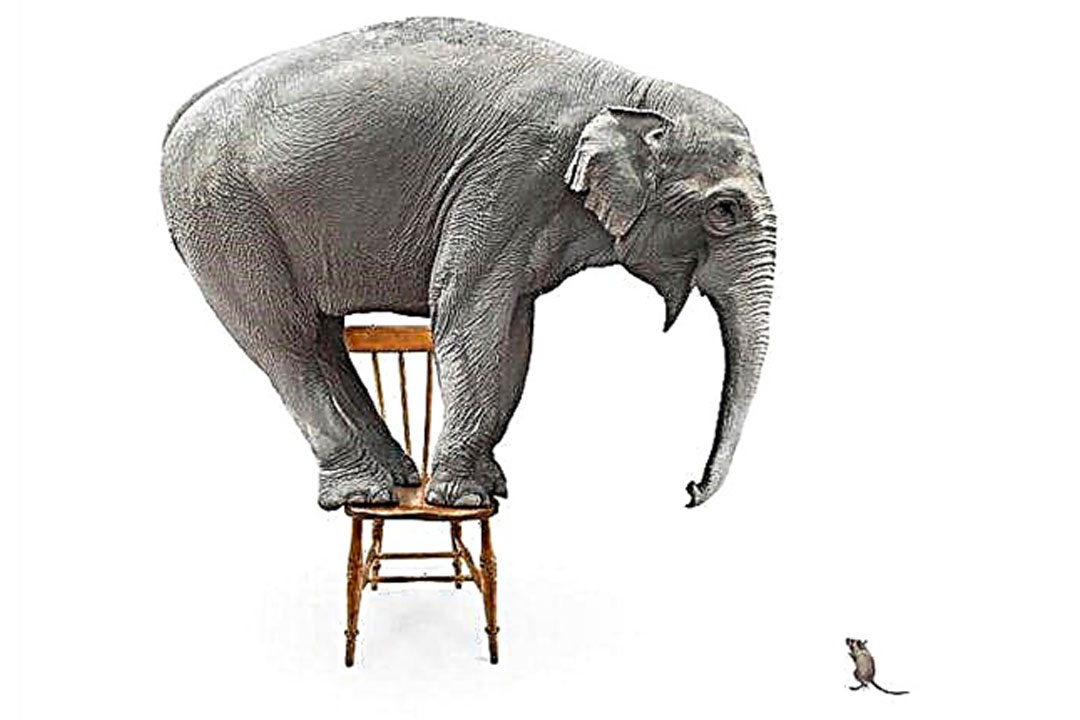| 3 Comments | Tatta Tameeyonk
Top 10 Science Misconceptions
The debunking of misinformation is a significant educational goal. This entails identifying and refuting the numerous myths propagated via the internet, folk wisdom, and word-of-mouth. A modern myth has deceived us all at some point. Fortunately, with a new series refuting many of these modern myths, I'm here to assist you. This edition of the series tries to dispel some prevalent scientific misunderstandings. You will be set free by the truth, as they say.
1.Humans use only 10% of their brains

The human brain is extremely active throughout the day and night, consuming roughly 20% of the body's resources and never truly "shutting off" until death. Even if you aren't paying attention, almost every portion of your brain is working on something. In truth, significantly more than the mythical 10% of your brain is constantly functioning. There's always the option of tapping into untapped potential depending on how you utilise your brain and how you care for it, but it's not because your grey matter was dormant before. Learning a new skill, forming a new memory, or imagining someone's face can all engage your brain in different ways, but they don't activate an underutilised portion. Rather, they're repurposing an active component.
2. A penny dropped from the Empire State Building has the potential to kill someone on the street.

According to this urban myth, if a penny were dropped from the top of the Empire State Building, it would speed to the point where it could kill someone on the sidewalk below. This is basically a case of faulty physics. Depending on the wind, the penny will reach a terminal velocity of around 30-100 miles per hour. Dropping a penny from above is still a jerk move. It would hurt, but no one would die. In either case, it's best to keep the change.
3. Human beings evolved from apes

This is something that even the most fervent opponents and proponents of evolution can agree on. Humans and higher apes (gorillas, bonobos, orangutans, and so on) are thought to have developed from a common ancestor known as the "missing link," according to conventional evolutionary theory. Humans do have an ape-like ancestry. However, this does not imply that humans are descended from apes. Humans and apes have a common ancestry, not evolution.
4. We have five senses

Apart from the five empirical senses (sight/visual, sound/auditory, touch/tactile, taste/gustatory, and smell/olfactory), there are at least four other senses that are rarely mentioned: proprioception (sensing one's orientation in space), thermosetting (sensing temperature), equilibrioception (sensing balance), and interception (sensing one's physiological condition). You can say you have "9 senses" the next time someone mentions their "5 senses" and then sit back and watch them think you have superpowers.
5. Elephants are afraid of mice
source : za.nationalgreenhighway.org

This myth appears to have its origins in children's tales. It would be amusing if such a large creature was afraid of a small one. Elephants, on the other hand, are unconcerned about mice. However, they have weak vision and move slowly. That implies that, despite their size, strength, and bravery, elephants can be startled when a small animal, such as a mouse or a bird, dashes past and surprises the ponderous pachyderm.
6. Lightning never strikes the same place twice

This myth is not only incorrect, but it is also potentially dangerous. Lightning frequently strikes the same spot again, or within a short distance of each other. Though you're outside during a lightning storm, no outdoorsman or weather forecaster would advise you to go stand where lightning has previously struck, as if you'll be safe. Instead, seek refuge, avoid touching anything metal or electrical, and stay away from windows. Also, putting your golf game or kite flying on hold until the storm passes is always a good idea.
7. Goldfish have a 3-7 second memory

The octopus is perhaps the smartest of all sea creatures, whereas blue whales are the largest and goldfish are neither. To be fair to the poor little fellow, he's actually quite cute for his size, and he's not nearly as silly and forgetful as you might think. Basic survival abilities can be learnt by goldfish and retained for up to three months. They're even able to keep track of the time. They might be trained to push a food lever at the same time every day in lab experiments. That 3-month memory is a lot more than 7 seconds long. To identify and recall food sources and avoid predator hideouts, they require a reasonably long-term memory. While goldfish can remember more than seven seconds, their attention span is still below that of teenagers.
8. Houseflies have a lifespan of 24 hours

Even within a species, life durations can vary greatly in the animal kingdom. In Swaziland, the average life expectancy is 49 years, while in Japan, it is 82 years. In 2010, the global average age was 67.2. (For details see the CIA World-Factbook). The lifespan of house pets is typically shorter. The oldest dog died at the age of 29, and the oldest cat died at the age of 38. While our unwelcome buzzing visitors, common houseflies, don't live if we do, they can live for up to a month. This myth most likely confuses the housefly with the mayfly, which has a lifespan ranging from 5 minutes to 24 hours depending on the species. For mayflies, time truly does fly!
9. Ostriches stick their heads in the ground when scared

Even if ostriches aren't particularly bright birds, they aren't capable of such behaviour. When they bend down for food or nose through a little depression for roots and seeds, they may appear to be hiding their heads because they are enormous birds with small heads. So, when they're terrified, what do ostriches do? They have a top speed of 31 miles per hour. Humans can reach a peak speed of 28 miles per hour. As a result, ostriches can outrun many predators. If that doesn't work, ostriches have been known to act like opossums and fall to the ground, pretending to be dead. It isn't the most thrilling form of defence, but it appears to be effective.
10. Bulls become angry at the colour red

Bulls and other animals are colour-blind to a degree and are unable to perceive red. They are, however, testy, and defensive creatures who will charge if they feel threatened, scared, angry, or simply annoyed. Their instinct to fight or flee is skewed toward "fight." The matador may wear a red cloak (the muleta) during bullfights, but the bull charges because of the matador's taunting, threats, and overall conduct. Bulls aren't bothered by the colour red, but jerks irritate them. But honestly, who can blame them?
That concludes our list of 10 Science Myth! I look forward to hearing from you in the section below. If these misconceptions have ignited your interest in the environment around you, the animal kingdom, or the physical principles that govern it all, you might want to consider pursuing a scientific degree or an investigative journalism degree.
